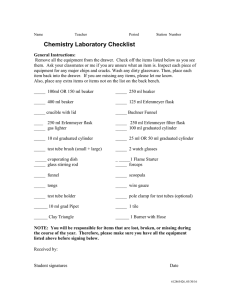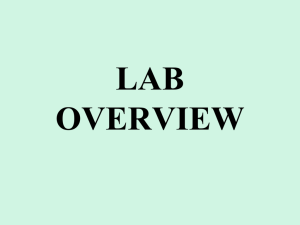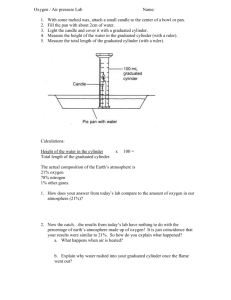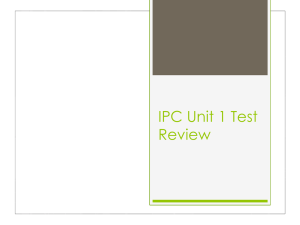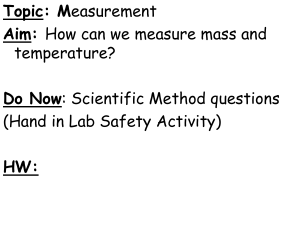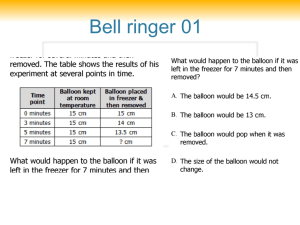Lab Report Format - Gordon State College
advertisement
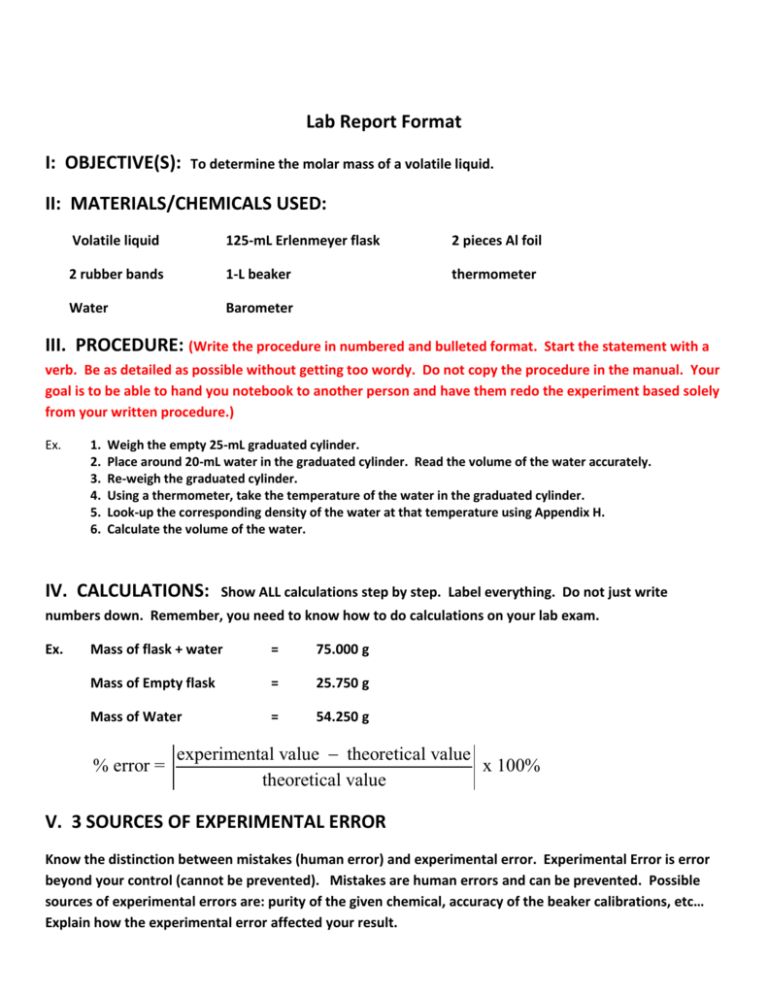
Lab Report Format I: OBJECTIVE(S): To determine the molar mass of a volatile liquid. II: MATERIALS/CHEMICALS USED: Volatile liquid 125-mL Erlenmeyer flask 2 pieces Al foil 2 rubber bands 1-L beaker thermometer Water Barometer III. PROCEDURE: (Write the procedure in numbered and bulleted format. Start the statement with a verb. Be as detailed as possible without getting too wordy. Do not copy the procedure in the manual. Your goal is to be able to hand you notebook to another person and have them redo the experiment based solely from your written procedure.) Ex. 1. 2. 3. 4. 5. 6. Weigh the empty 25-mL graduated cylinder. Place around 20-mL water in the graduated cylinder. Read the volume of the water accurately. Re-weigh the graduated cylinder. Using a thermometer, take the temperature of the water in the graduated cylinder. Look-up the corresponding density of the water at that temperature using Appendix H. Calculate the volume of the water. IV. CALCULATIONS: Show ALL calculations step by step. Label everything. Do not just write numbers down. Remember, you need to know how to do calculations on your lab exam. Ex. Mass of flask + water = 75.000 g Mass of Empty flask = 25.750 g Mass of Water = 54.250 g % error = experimental value theoretical value x 100% theoretical value V. 3 SOURCES OF EXPERIMENTAL ERROR Know the distinction between mistakes (human error) and experimental error. Experimental Error is error beyond your control (cannot be prevented). Mistakes are human errors and can be prevented. Possible sources of experimental errors are: purity of the given chemical, accuracy of the beaker calibrations, etc… Explain how the experimental error affected your result. THINGS TO REMEMBER: 1. Come to lab prepared. In short, read the experiment before coming to lab. Know what you will be doing, what equations will be needed and what materials and chemicals will be needed. 2. Dress properly. No shorts, open-toed shoes, bare midriffs, etc… 3. No food or drink in the lab. 4. Do not leave your set-up unattended, especially if the Bunsen burner is on. 5. Write your lab report as legibly as you can. Remember you keep the originals while I get the carbon copy. If I can’t read the carbon copy, I will mark your statements as incorrect. 6. Do not cram the whole lab report into one page. You can use as many pages as possible. 7. Equations should not be on the data sheet. They should be in the lab report. The data sheet must be clean and neat. Do not write on the margins of the data sheet. 8. All data must be written in the notebook – not on your palm, arm, paper towel, scratch paper, etc… 9. Bring a calculator to lab. 10. Use goggles and a lab apron. 11. If you need to graph your data, use Excel, if possible. If you prefer to draw your graph, do not skimp on paper. Use a ruler. Line spacings must be uniform. Expand graph so trends can be seen. Most importantly, label the x- and y- axes. 12. Return your glassware in your locker. 13. Put back any common glassware, chemicals, etc… 14. Clean up your lab bench before you leave. Also clean up the common areas after every use. If you drop chemicals on the balance, clean it up. 15. Wash your hands before you leave the lab.
